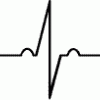For study purposes only -
The Herpes HSV-1 virus establishes latency in nervous system tissues which makes it very hard to destroy. There are certain ways to lure it out of latency and into self replication these include:
- HDAC Inhibitors like Na Butyrate
- Forskolin
- L-arginine supplementation
- caffeine
- sunlight
This patented new treatment method is worth studying, it seems to involve luring the virus out of latency using inducers like HDACis, before hitting it with a dose of an antiviral, perhaps like valacyclovir. In theory this should kill a larger number of the virus and hopefully even deplete the reservoir of HSV-1. Killing all of the viruses would be awesome indeed as that would leave you with some degree of immunity. Interestingly supplements like L-Arginine, forskolin and caffeine could be synergistic with HDACis for this purpose.
Robert J. Danaher, Robert J. Jacob, [...], and Craig S. Miller
Histone acetylation is implicated in the regulation of herpes simplex virus type 1 (HSV-1) latency. However, the role of histone acetylation in HSV-1 reactivation is less clear. In this study, the well established model system, quiescently-infected, neuronally-differentiated PC12 (QIF-PC12) cells, was used to address the participation of histone acetylation in HSV-1 reactivation. In this model, sodium butyrate and trichostatin A (TSA), two histone deacetylase inhibitors, stimulated production of infectious HSV-1 progeny from a quiescent state. To identify viral genes responsive to TSA, we analyzed representative α, β, and γ viral genes using quantitative real-time polymerase chain reaction. Only the latency-associated transcript (LAT) accumulated in response to TSA treatment, under culture conditions that restricted virus replication and spread. This led us to evaluate the importance of LAT expression on TSA-induced reactivation. In QIF-PC12 cells, the LAT deletion mutant virus dLAT2903 reactivated equivalently with its wild type parental strain (McKrae) after TSA treatment, as well as forskolin and heat stress treatment. Both viruses also reactivated equivalently from latently infected trigeminal ganglia explants from rabbits. In contrast, there was a marked reduction in the recovery of dLAT2903, as compared to wild type virus, from the eyes of latently infected rabbits following epinephrine iontophoresis. These combined in vitro, ex vivo and in vivo data suggest that LAT is not required for reactivation from latently infected neuronal cells per se, but may enhance processes that allow for the arrival of virus at, or close to, the site of original inoculation (i.e., recrudescence)
Edited by Phoenicis, 16 May 2014 - 03:44 PM.



















































